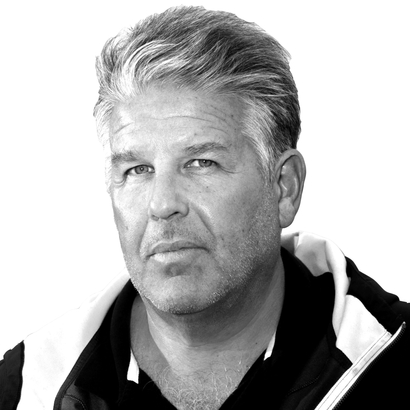Donald Trump and New York City have been falling out of love with each other for quite some time now. The former president long ago decamped for Mar-a-Lago, in Palm Beach, leaving his 11,000-square-foot triplex, in Trump Tower, to collect dust. (It’s not 30,000 square feet, as its owner has so often claimed.)
And when Trump rolls back into town these days—as he did in April for a deposition in the civil lawsuit that Letitia James, the New York State attorney general, has brought against him—the protesters arrive early and often in front of Trump Tower and along the route of his motorcade downtown to the courthouse. “New York hates you,” they chant, among other things.
But nowhere is New York’s symbolic rejection of Trump clearer than at the Hyatt Grand Central hotel in Midtown, where his family’s real-estate business first made the leap from Queens and Brooklyn to Manhattan. There, on 42nd Street between Park and Lexington Avenues, things are chugging along without him. Unfortunately, though, Trump’s absence alone doesn’t necessarily spell progress. In some ways, it’s a reminder that in a city where bigger is always thought to be better, developers who are intent on grandiosity haven’t learned much from the past, nor from Manhattan’s historically high commercial vacancy rates.

Trump still gushes on the Trump Organization’s Web site about his purchase of the building in 1976: “One of the most famous real estate deals in history.”
Trump bought the dilapidated pile, then known as the Commodore Hotel, together with the Hyatt corporation, turning it into a Grand Hyatt Hotel, thanks to a 40-year tax abatement—“the first ever granted to a commercial property,” according to the Trump Web site—and a $70 million mortgage given by a consortium of banks. Starting in 1979, the old Commodore Hotel was completely renovated, with Trump replacing the original façade with his hideous, “signature” glass-and-steel covering.
Trump calls his purchase of the Commodore Hotel “one of the most famous real estate deals in history.”
It was a financial windfall for the young developer. In October 1996, Hyatt bought out Trump’s half-stake in the building for $142 million.
These days, though the Hyatt has reopened—it was closed between the start of the pandemic and November 2021—its ground level is almost entirely obscured by navy-blue plywood hoarding, a signal to the outside world that some sort of change is afoot. Later this year, the building will undergo yet another transformation. It will be demolished to make way for what is now being called 175 Park Avenue, a 1,575-foot-tall, 83-story skyscraper that will be wedged between the immensely successful office building One Vanderbilt and Grand Central Terminal, to the west, and the Chrysler Building, to the east.

The starchitects at Skidmore, Owings & Merrill (SOM) designed the tower, which will be mixed-use and have 2.1 million square feet of class-A office space as well as 500 new Hyatt hotel rooms, 10,000 square feet of retail space, and a 25,000-square-foot, elevated plaza. If completed based on the current projections, 175 Park will be the tallest building in Midtown East and the tallest building by roof height in the western hemisphere—only the spire on One World Trade Center will keep it from being the tallest building period.

In the SOM renderings, the building looks like a linebacker, hunky and solid, towering over the dignified Chrysler Building, the MetLife Building (formerly Pan Am), to the north, and, to the west, both One Vanderbilt and 383 Madison, which was Bear Stearns’s headquarters before the 2008 financial crisis. At least at its base, 175 Park bears a striking resemblance to the Norman Foster–designed JPMorgan Chase headquarters, currently going up at 270 Park Avenue.
The developers of 175 Park Avenue, RXR Realty and TF Cornerstone, as well as SOM itself are being surprisingly mum about it all, despite indications that it will be a monumental redevelopment. When reached for comment, SOM referred me to Scott Rechler, the chairman and C.E.O. of RXR, a big New York City landlord. Rechler is also on the board of the Federal Reserve Bank of New York. Through Rich Stein, the director of external affairs at RXR, Rechler “decided to pass on this opportunity at this time.”

Rechler did comment to The New York Times in April, though, about the brewing financial crisis in the commercial-real-estate market. It turns out that RXR, with 26.5 million square feet of commercial property and a residential portfolio of approximately 7,100 units, is not immune to a combination of higher interest rates and a post-pandemic workforce that would prefer to work from home rather than commute to Manhattan.
The article noted that RXR and Rechler had stopped making mortgage payments on an office building it owned at 61 Broadway, in Manhattan’s financial district. Rechler turned the building over to its German lender, Aareal Bank, which is reportedly trying to sell it, or at least its loan. Rechler had his doubts that either could happen in the current market.
Nevertheless, The New York Times reported, Rechler is moving forward with the redevelopment of 175 Park Avenue, seemingly determined to turn it into Manhattan’s swankiest new skyscraper. “It’s one of a kind in what is and will always be one of the best office markets in the world,” he told the Times, apparently not understanding the irony of his comment’s appearing in an article about an impending real-estate crisis.
Even in his heyday, Donald Trump couldn’t have put it any better than that.
William D. Cohan is a Writer at Large at AIR MAIL and the author of such best-selling books as The Last Tycoons, House of Cards, and The Price of Silence. He is a founding partner of Puck. His latest book, Power Failure, is out now

